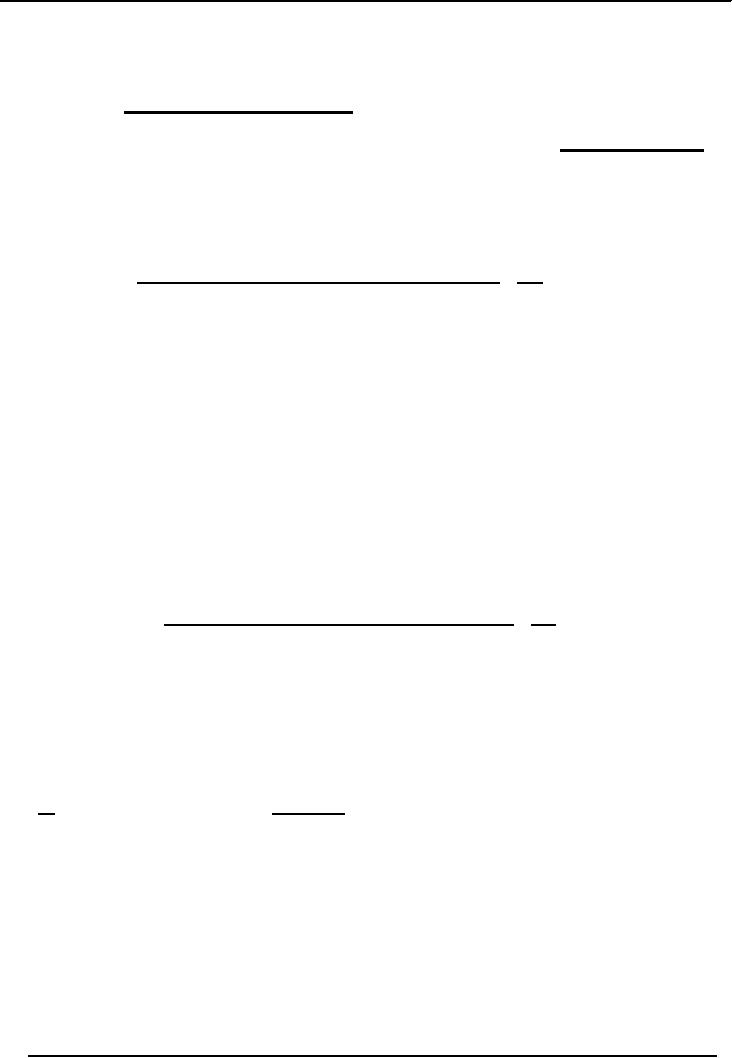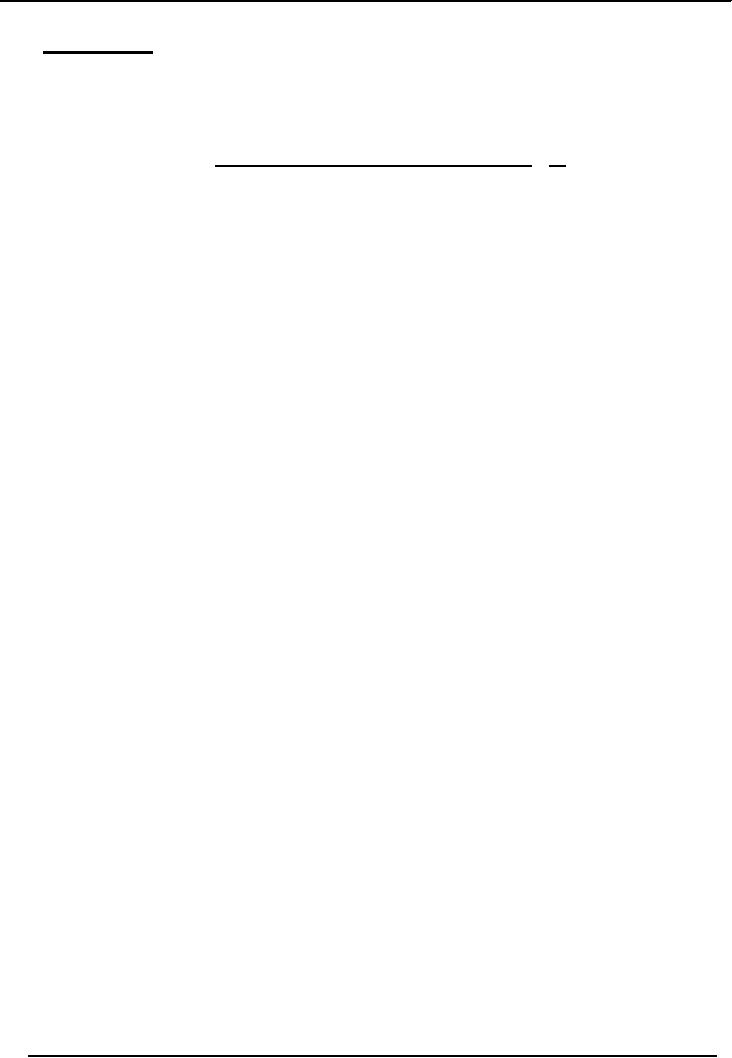 |
LEVERAGE, DEBT RATIOS |
| << Liquidity of Receivables |
| PROFITABILITY RATIOS >> |

Financial
Statement Analysis-FIN621
VU
Lesson-36
LEVERAGE/DEBT
RATIOS
(b)
Analysis
by long-term creditors: Interest
of long-term creditors is to see the
long-term
solvency
of the business and rate of return on
their loans. Solvency is the ability to
meet
outside
liabilities from total
assets. Indicators of solvency
are the Long-term
Solvency,
which
are as follows:-
i)
Debt
To-Total-Assets: The
debt-to-total assets ratio is
derived by dividing a
firm's
total
debt by its total assets: It
indicates percentage of total assets
financed by debt
=
Total outside liabilities
/Debt
= 75 =
37.5%
Total
assets (total liabilities
+shareholders funds)
200
From
creditors' point of view, the
lower the debt ratio, the
better it is because it
means
that
shareholders have contributed the bulk of
funds and margin of
protection to creditors is
high.
In
addition to the previous ratio, we
may wish to compute the following
ratio, which deals with
only
the
long-term capitalization of the
firm:
*Long
Term debt/ Total Capitalization
(Share
capital + Fixed
Liabilities)
Where
total capitalization represents
all long-term debt and shareholder's
equity. This tells us
the
relative
importance of long term debt to the
capital structure (long-term financing)
of the firm.
Leverage:
It
means operating a business
with borrowed money. It
should be used to
earn
a return (on assets or
equity) greater than cost of
borrowing i.e. interest. Alternate term
for this is
"Gearing".
ii)
Equity
ratio:
Total stockholders equity (including
preferred stock) = 125 =
62.5%
Total
assets (total liabilities +
shareholders funds)
200
This
is opposite of Debt ratio.
Low equity ratio indicates
extensive use of leverage
i.e.
borrowings.
iii)
Debt-To-
Equity: Ratio
of borrowed capital to Shareholders'
funds is called Debt
Equity Ratio.
The
debt-to-equity ratio is computed by
simply dividing the total
debt of the firm (including
current
liabilities)
by its shareholders' equity:
= 75 =
0.6 i.e. Debt is 0.6 of
Equity =Debt Ratio = 37.5:
62.5 (Debt equity
Ratio)
125
Equity
Ratio
Creditors
would generally like this
ratio to be low. The lower
the ratio, the higher the level of
firm's
that
is being provided by shareholders and the
larger the creditor cushion (margin of
protection) in
the
event of shrinking asset values or
outright losses.
Depending
on the purpose for which the
ratio is used, preferred stock is
sometimes included as
debt
rather
than as equity when debt
ratios are calculated. Preferred stock
represents a prior claim
from
the
stand point of the investors in common stock:
consequently, investors might include
preferred
stock as
debt when analyzing a firm.
The ratio of debt to equity
will vary according to the nature
of
the
business and the variability of
cash flows. A comparison of the debt to
equity ratio for a
given
company
with those of similar firms
gives us a general indication of the
credit worthiness and
financial
risk of the firm.
136

Financial
Statement Analysis-FIN621
VU
Coverage
Ratio
Coverage
ratios are designed to relate
the financial charges of a
firm to its ability to service,
or
cover,
them. One of the most traditional
coverage ratios is the interest coverage ratio, or
times
interest
earned
iv)
Interest
coverage ratio =
operating income available for interest
payment = 25 = 5
annual
interest expenses.
5
(Normal
ratio 3:5)
This
ratio serves as one measure of
the firm's ability to meet
its interest payments and thus
avoid
bankruptcy.
In general, the higher the ratio, the greater the
likelihood that the company could
cover its
interest payments
without difficulty. It also
sheds some light on the
firm's capacity to take on
new debt.
Changes
in Solvency Ratios indicate changes in
enterprise activities; its expansion
or
contraction.
137
Table of Contents:
- ACCOUNTING & ACCOUNTING PRINCIPLES
- Dual Aspect of Transactions
- Rules of Debit and Credit
- Steps in Accounting Cycle
- Preparing Balance Sheet from Trial Balance
- Business transactions
- Adjusting Entry to record Expenses on Fixed Assets
- Preparing Financial Statements
- Closing entries in Accounting Cycle
- Income Statement
- Balance Sheet
- Cash Flow Statement
- Preparing Cash Flows
- Additional Information (AI)
- Cash flow from Operating Activities
- Operating Activities’ portion of cash flow statement
- Cash flow from financing Activities
- Notes to Financial Statements
- Charging Costs of Inventory to Income Statement
- First-in-First - out (FIFO), Last-in-First-Out (LIFO)
- Depreciation Accounting Policies
- Accelerated-Depreciation method
- Auditor’s Report, Opinion, Certificate
- Management Discussion & Analyses (MD&A)
- TYPES OF BUSINESS ORGANIZATIONS
- Incorporation of business
- Authorized Share Capital, Issued Share Capital
- Book Values of equity, share
- SUMMARY
- SUMMARY
- Analysis of income statement and balance sheet:
- COMMON –SIZE AND INDEX ANALYSIS
- ANALYSIS BY RATIOS
- ACTIVITY RATIOS
- Liquidity of Receivables
- LEVERAGE, DEBT RATIOS
- PROFITABILITY RATIOS
- Analysis by Preferred Stockholders
- Efficiency of operating cycle, process
- STOCKHOLDERS’ EQUITY SECTION OF THE BALANCE SHEET 1
- STOCKHOLDERS’ EQUITY SECTION OF THE BALANCE SHEET 2
- BALANCE SHEET AND INCOME STATEMENT RATIOS
- Financial Consultation Case Study
- ANALYSIS OF BALANCE SHEET & INCOME STATEMENT
- SUMMARY OF FINDGINS